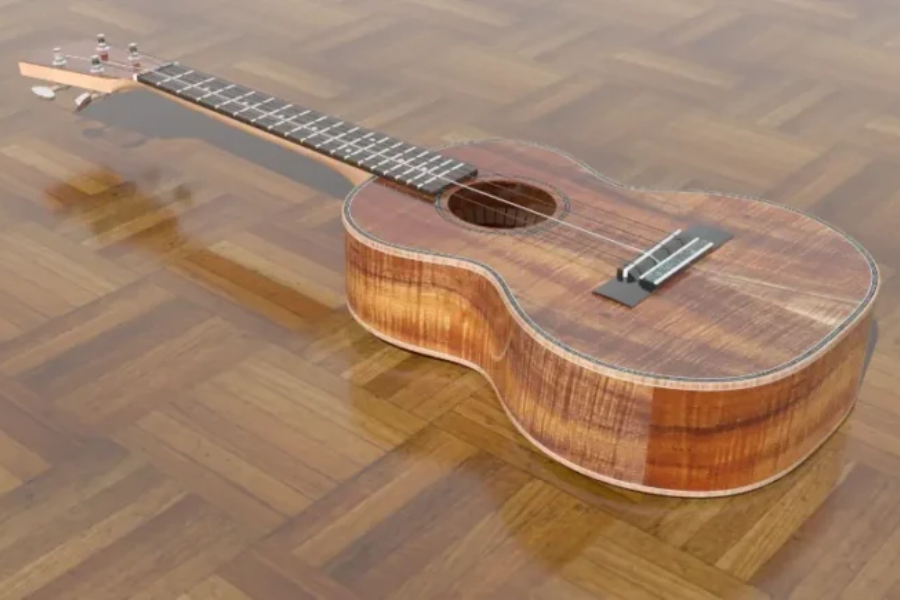Crafting Your Own Electric Ukulele: A Step-by-Step Guide
Creating your own electric ukulele is an exciting endeavor that merges creativity, music, and technology. With the right tools and guidance, you can build an instrument that is not only unique but also perfectly tailored to your musical preferences. Here’s how to embark on this DIY journey.
Preparing Your 3D Printer
The first step in the process is to ensure that your 3D printer is properly set up. Begin by loading the appropriate filament for your design—common choices include PLA or ABS, depending on the desired finish and durability. Before you start printing, double-check the printer’s settings, including layer height, infill percentage, and print speed. These settings should be optimized for the specific size and complexity of the ukulele you are about to create.
Printing the Ukulele Body
Depending on the size of your 3D printer’s build platform, you might need to print the ukulele body in sections. Many Electric Ukulele Solid Body STL Files are designed with this in mind, and they usually come with clear instructions for assembly. Once the printing is complete, it’s time to move on to post-processing.
Post-Processing for a Professional Finish
After printing, you will likely need to smooth the surfaces of your ukulele. This involves sanding down any rough edges and applying a finishing coat, such as paint or varnish. These final touches not only enhance the aesthetic appeal of your instrument but also protect it from wear and tear.
Installing the Electronics
With the body prepared, it’s time to install the electronic components. This step includes attaching the pickups, wiring, tuners, and strings. If you’re new to this aspect of instrument building, consider consulting online resources or reaching out to an expert for assistance. Proper wiring is crucial for ensuring that your electric ukulele functions optimally and produces the desired sound.
FAQs:
1. What are Electric Ukulele Solid Body STL Files?
Electric Ukulele Solid Body STL Files are digital blueprints specifically designed for 3D printing electric ukuleles. These files contain detailed information about the ukulele’s body shape, dimensions, and features, allowing users to create a physical instrument using a 3D printer.
2. Where can I find STL files for electric ukuleles?
You can find STL files on various online platforms, including Thingiverse, MyMiniFactory, and other 3D design websites. Some files are available for free, while others may require a small fee.
3. Can I customize the STL files?
Yes! STL files can be modified using CAD software to fit your design preferences. You can alter the shape, size, and features of the ukulele to create a truly unique instrument.
4. What materials can I use for 3D printing an electric ukulele?
Common materials include PLA and ABS, but you can also experiment with other filaments, such as wood-based PLA or carbon fiber-infused filament, depending on your desired look and sound quality.
5. Is 3D printing an electric ukulele cost-effective?
Yes, 3D printing an electric ukulele can be much more affordable than purchasing a custom-built instrument. The cost of materials is generally low, and once you have access to a 3D printer, your overall expenses will decrease significantly.
6. Do I need special skills to design my own electric ukulele?
While some familiarity with CAD software can be helpful, many users can successfully modify existing STL files without extensive design skills. There are also custom design services available if you prefer to hire a designer.
7. What electronics do I need to complete my electric ukulele?
To complete your electric ukulele, you will need pickups, wiring, tuners, strings, and possibly other components like volume and tone controls. The specific electronics will depend on your design and sound preferences.
Conclusion
The advent of Electric Ukulele Solid Body STL Files is revolutionizing how musicians and hobbyists approach instrument creation. By leveraging 3D printing technology, you can craft a custom electric ukulele that reflects your personal style and musical preferences. With a variety of design options, materials, and the ability to modify STL files, the possibilities are virtually limitless. Whether you are an experienced builder or just starting, creating your own electric ukulele can be a rewarding and fulfilling project. Dive into the exciting world of 3D-printed instruments, and let your creativity take flight!

Leave a Reply